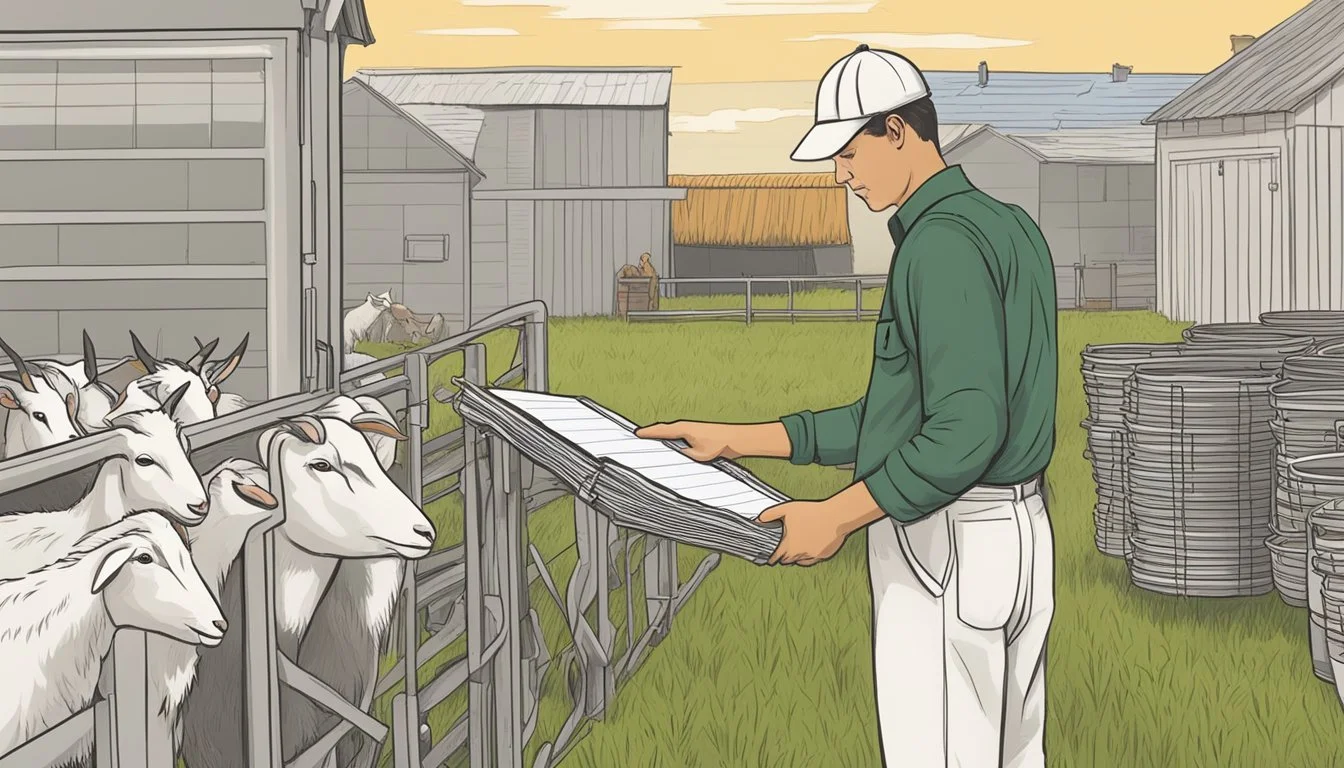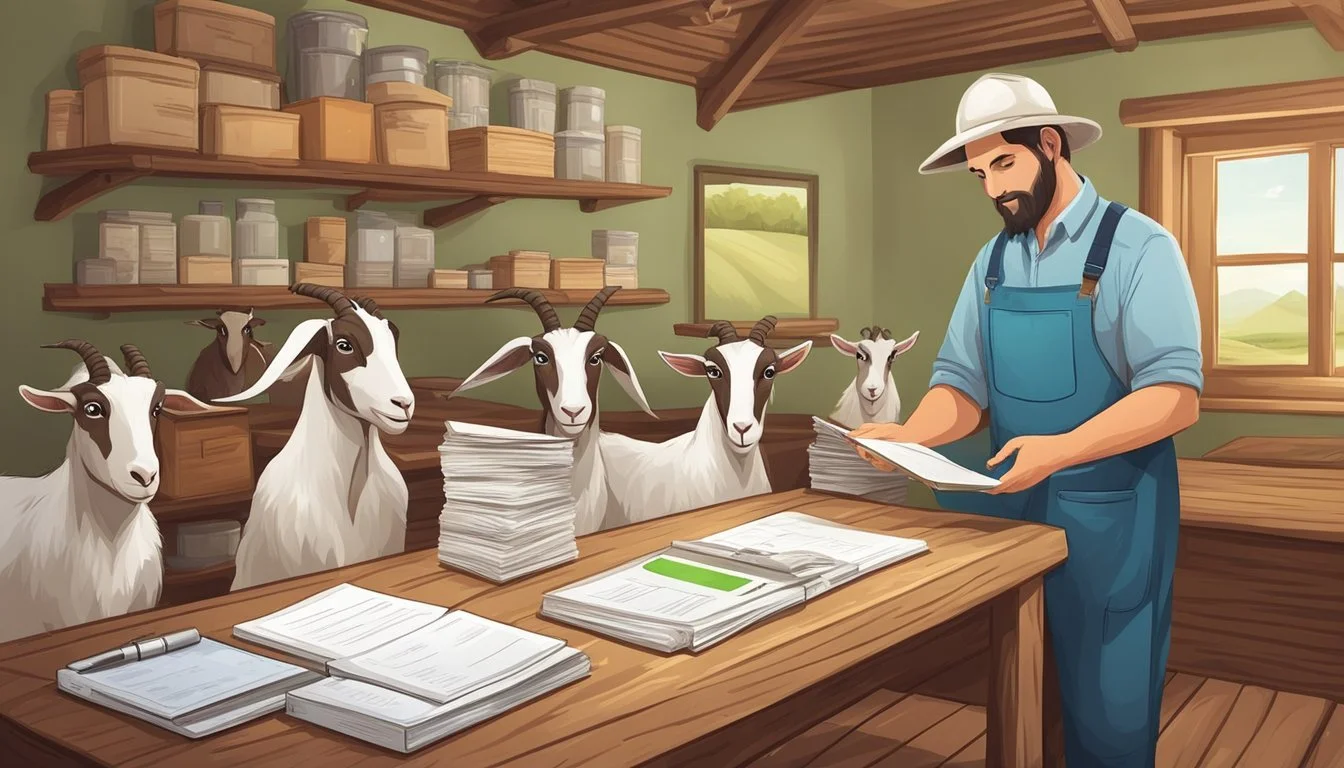What Kind of Records Should I Keep for My Goat Herd?
Essential Documentation Tips
Maintaining accurate goat records is an essential aspect of managing a herd, whether on a small homestead or in a larger commercial setting. Good record keeping enables goat owners to track the health, production, and breeding patterns of their animals. Detailed records assist in making informed decisions about herd management, such as selective breeding for improved herd health, production, or conformational traits. Thorough and systematic record keeping covers a range of data — from basic identification to detailed health and breeding histories.
Effective goat herd management is anchored by a few critical types of records. A goat owner should document each animal's identification details, including name, breed, date of birth, registration information, and any unique physical characteristics. Health records are also vital, chronicling vaccinations, deworming schedules, illnesses, and veterinary visits. For breeding purposes, tracking the lineage, mating dates, birthing outcomes, and kid growth rates is indispensable. Record keeping methods may vary from traditional paper systems, such as basic paper records and binders, to more advanced digital solutions typically used by larger operations.
To ensure that records are helpful and accessible, the information should be organized and updated regularly. While some goat keepers may prefer manual entries in a notebook, others might opt for specialized software designed for livestock record keeping. Whichever method is chosen, the key to successful goat record keeping lies in consistency and attention to detail. This foundational activity not only helps to preserve the animals' welfare and productivity but is also crucial for regulatory compliance and the tracing of lineage, particularly in registered herds.
Setting Up Your Record Keeping System
Setting up a robust record keeping system is crucial for managing a goat herd effectively. The process involves selecting the proper tools, organizing documentation, and choosing between digital and physical record formats to ensure easy access and accurate tracking of each goat's history and health.
Choosing the Right Tools
A 3-ring notebook or binder provides a simple yet effective way to store physical records. They should be sturdy and large enough to accommodate growth in record volume. Within the binder, tabbed dividers help categorize different types of records, such as health logs, breeding histories, and purchase records. For those preferring digital solutions, a spreadsheet software can be a powerful tool to sort and analyze data with efficiency.
Organizing Your Binder or Notebook
Within the binder or notebook, organization is key. Dividing sections clearly, perhaps by individual goat or by record type, allows for quick retrieval of information. Using plastic sleeve protectors can keep photos and important documents like registration papers and purchase receipts safe and orderly.
Implementing a Tagging System for Identification
Each goat in the herd should have a unique identification system. Tags or microchips are common methods. The record keeping system must reference these identifiers, noting any relevant information, such as the goat's name, breed, and any specific health concerns. This tagging system ensures that data is accurately matched to the respective goat.
Digital vs. Physical Records
When deciding between digital or physical records, consider accessibility, security, and ease of updating records. A digital system allows for backups and easy sharing but requires reliable technology. Alternatively, a well-maintained binder offers the simplicity of pen-and-paper without the need for electronic devices, although it is susceptible to physical damage or loss. Combining both methods could provide redundancy and peace of mind.
Basic Goat Information
Maintaining accurate records of a goat herd is essential for good herd management. Specific information such as pedigrees and identification details play a critical role in tracking lineage and individual health.
Maintaining an Updated Pedigree
Every goat's pedigree provides a valuable record of its lineage. It is essential for:
Breeding decisions
Tracking genetics
Maintaining purebred status
In practice, keeping an updated pedigree involves recording each animal's parents, grandparents, and sometimes even great-grandparents. These records should also note any significant traits or genetic conditions that could impact future offspring.
Individual Goat Identification Records
Identification ensures every goat in the herd can be easily and accurately recognized. Proper identification records should include:
A unique identifier (e.g., ear tag number)
Detailed physical characteristics (e.g., color, spots, or other distinctive markings)
A current photograph
This information assists in managing the herd, is essential for veterinary care, and supports accurate record-keeping for production, health, and breeding programs.
Health and Veterinary Care
Maintaining comprehensive health and veterinary records is essential for effective goat herd management. These records not only ensure that each goat receives timely care but also aid in the assessment of health trends within the herd.
Vaccination Schedule and History
Vaccinations are critical for preventing common goat diseases. Keep a detailed log that includes the type of vaccine, date of administration, and dosage. Record any reaction to a vaccine for future reference. This information is crucial for tracking immunity levels and scheduling future vaccinations.
Disease and Illness Tracking
Accurate tracking of diseases and illness incidents in the herd allows for timely interventions and can prevent outbreaks. Use a form that includes the date, symptoms, diagnosis, and outcome of each case. Note if a goat has been dewormed or required other medication, as well as the withdrawal period if applicable.
Hoof Trimming and Farrier Visits
Regular hoof trimming is vital for preventing lameness and other hoof-related issues. Log each hoof trimming session with dates and any observations regarding the goats' hooves. If a professional farrier is used, keep a record of these visits and any recommendations they make.
Worming and Medication Logs
Administering wormers and medications is part of routine goat care. It is important to document each treatment, including the product name, dosage, date, and reason for treatment. Monitor and record any adverse reactions. Maintain a clear record of each medication's withdrawal period to prevent residues in milk or meat.
Breeding Management
In managing a goat herd, meticulous records of breeding are paramount to ensure the health and productivity of the herd. It involves careful documentation of breeding season activities, pairing decisions, and the outcomes of those breedings, such as the success rate and the health of the offspring.
Recording Breeding Dates and Pairings
Breeding Season: Breeding season is a critical time for goat herd management. To maximize the potential of your herd’s genetic lineage and maintain efficiency, record the breeding dates and the pairings of does and bucks. This should include details such as:
Buck and Doe Identification: Note their tag numbers or names.
Date of Breeding: Document the exact date or range of dates when breeding occurred.
This information helps to predict kidding dates and prepare for potential complications.
Tracking Kidding Dates and Results
Kidding Record: Once breeding has taken place, tracking the resulting kidding dates is essential for the continued management of the herd. The kidding record should note the following:
Expected Kidding Date: Calculate approximately 150 days from the breeding date.
Actual Kidding Date: Record when the doe actually kids to monitor the accuracy of predictions.
Kidding Results: Document the number of kids born, their sexes, any complications, and the survival rate.
This data allows for evaluation of the breeding program's success and assists in making informed decisions for future breedings. Keeping accurate breeding records and kidding records is key to a healthy and productive goat herding operation.
Production Records
Keeping detailed production records is essential for the efficient management of a goat herd. These records not only track current production levels but also help in making informed decisions about the herd's ongoing and future management.
Milk Production Logging
Daily Milk Yield: It's critical to log the amount of milk each goat produces on a daily basis. This includes:
Morning and Evening Production: Document the milk volume from each milking session.
Lactation Curve: Track the change in milk yield over the lactation period for analysis.
For example:
Goat ID: 001, Morning Yield (liters): 1.2, Evening Yield (liters): 1.1, Total Daily Yield (liters): 2.3
Goat ID: 002, Morning Yield (liters): 1.0, Evening Yield (liters): 0.9, Total Daily Yield (liters): 1.9
Logging the milk production record for each animal can indicate patterns and highlight any need for dietary adjustments or health interventions.
Meat Production and Growth Data
Growth Metrics: They should document weight gain over time to assess the performance of meat-producing goats. Important metrics include:
Weaning Weight: Weight of the kid at weaning.
Weight at Various Stages: Subsequent weights post-weaning.
Tracking these metrics enables producers to select for breeding goats that have preferable growth rates and meat production characteristics.
Fiber Production Records
Fiber Yield: For breeds such as Angoras, record the quantity and quality of fiber shorn from each goat.
Shearing Frequency & Weight: Note how often shearing occurs and the weight of fiber yielded each time.
This systematic recording of fiber production allows for improved breeding decisions targeting higher quality fiber production per goat.
Supplementary Records and Resources
Keeping comprehensive records is essential for managing a goat herd effectively. These records go beyond the basics of identification and breeding, encompassing detailed aspects of feed management, inventory tracking, performance evaluation, and daily operations.
Feed and Nutrition Management
Proper feed and nutrition management is critical for ensuring the health and productivity of a goat herd. Utilize a daily planner to document feed types and quantities, including hay and supplements, to monitor the nutritional intake of the goats closely. Keeping track of this can help one assess the effectiveness of the feeding strategy and make informed adjustments.
Types of Feed: List hay, grains, supplements.
Quantity: Track daily feed amounts.
Schedule: Note feeding times and frequencies.
Tracking Farm Supplies and Inventory
For efficient farm operations, maintaining an inventory of farm supplies is necessary. This includes tracking seeds for pasture, medications, farming equipment, and supplies needed for other farm animals, such as chickens. Use record books or printables to keep an up-to-date list of available resources, which helps in planning purchases and budgets.
Medications & Health Supplies: Log usage and stock levels.
Equipment & Tools: Note condition, location, and maintenance schedules.
Supplies for Other Animals: Chronicle resources for chickens or other livestock.
Goals and Performance Review
Set and review goals such as herd size, milk production, or show achievements, using a structured approach with worksheets or planners. This enables one to track the progress of the herd against set objectives and make necessary adjustments to management practices.
Production Goals: Milk yield, growth rates.
Breed Improvement: Genetic benchmarks, breeding targets.
Financial Objectives: Income, cost management.
Daily Activities and General Notes
Documenting daily activities helps in maintaining a routine and provides a valuable reference for the care and management of the herd. Use a daily planner to record events like visits from the farrier, changes in the goats’ behavior, or any out-of-the-ordinary occurrences. These notes can be vital for detecting patterns or issues that may require attention.
Routine Tasks: Feeding, milking, cleaning.
Health Checks: Observations, vet visits.
Miscellaneous Notes: Weather effects, visitor log, phone calls related to herd management.



